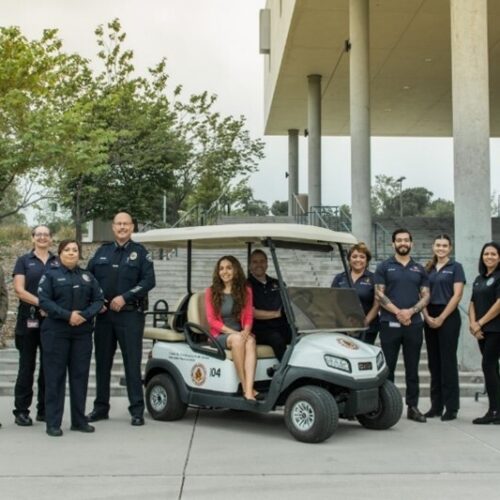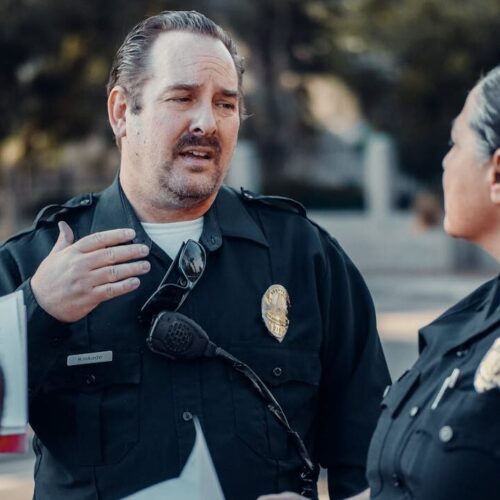
Matching Care to Need: 5 Facts on How to Improve Behavioral Health Crisis Response
It would hardly be controversial to expect an ambulance to arrive if someone called 911 for a physical health emergency. And yet, for years, the default responders for a behavioral health emergency have been law enforcement officers, not behavioral health professionals.
This has recently led to public calls for change, particularly following high-profile instances such as those involving Sonya Massey, Najee Seabrooks, and Andrew Washington—where a person with a mental health need died at the hands of a responding officer. But even when the outcomes haven’t been fatal, community advocates and law enforcement professionals agree that responding officers are often not the ones best suited to handle these crises.
Thankfully, jurisdictions across the country have started implementing best practices in crisis response, including investing in behavioral health responses that are evidence-based and promote long-term recovery and community safety. Recent federal guidance backs up these practices, and also details the legal responsibilities established by the Americans with Disabilities Act (ADA) and provides resources to support community efforts.
Here are five facts about behavioral health crisis response as detailed in the guidance, and how they can be put into practice to improve community response efforts.
1. People experiencing a behavioral health emergency have a right to receive a behavioral health response.
In the same way that someone can expect an ambulance to arrive in a physical health emergency, the guidance makes it clear that they should also expect a behavioral health response to a behavioral health crisis. This can look different across jurisdictions.
For example, some choose to invest in co-responder models that include an officer and a clinician, or community responder models that feature trained community members and health professionals. No matter the model, though, it should not just include police officers as the default responders when there is no immediate safety risk to the public because:
- This change in response approaches not only establishes more effective, compassionate, and coordinated crisis responses, it ensures that states and local communities comply with the ADA.
- The guidance also reinforces the point that the ADA prohibits discrimination by public entities, including emergency response systems, against people with all types of disabilities, whether physical or behavioral health-related.
2. Providing a health response to people in a behavioral health emergency can save lives, reduce harm, and save communities money.
Following instances such as the deaths of Mr. Seabrooks and Mr. Washington in New Jersey, that state passed legislation to establish health-focused community crisis response teams and co-responder programs. This is just one example of the kind of evidence-based practice that state policymakers and local communities can look to emulate.
Other key considerations, according to the guidance, include the following:
- Crisis services can help prevent future crises and reduce unnecessary use of force between officers and residents. As one option, communities can raise awareness of 988 as a 911 alternative when behavioral health assistance is needed. And law enforcement agencies can work with their 988 partners to develop clear protocols to divert appropriate behavioral health-related calls to 988 and other behavioral health services.
- Communities should also ensure that diversion facilities and alternative response models are open to everyone and can serve people experiencing all types of behavioral health crises, so responders have reliable places to send someone in need.
- In communities where law enforcement officers are the default crisis responders, taxpayer costs are significantly higher than when crisis response services are employed, as shown in case studies detailed in the guidance.
3. Person-centered practices are most effective in resolving behavioral health crises.
According to the guidance, these responses should also be trauma-informed, culturally responsive, and based on the knowledge of people with clinical training. Depending on a jurisdiction’s needs, this can include:
- Deploying appropriately trained and equipped responders;
- Including people with lived experience within community crisis response teams;
- Developing working relationships with local behavioral health providers;
- Diverting appropriate 911 calls to behavioral health responders;
- Encouraging use of the national 988 Suicide and Crisis Lifeline; and
- Ensuring that crisis services are available 24/7.
4. Behavioral health training is essential for law enforcement and other first responders.
Good intentions aren’t enough; emergency responders without behavioral health training may lack the skills to address behavioral health crises or support other people with disabilities. Communities should follow the best practices laid out in the guidance and ensure that they:
- Train law enforcement personnel in the legal standards for imposing transport holds when dealing with someone with mental health needs, and in ways of working cooperatively with other crisis response professionals;
- Make de-escalation policies and training central to all positions across the emergency response continuum, from call taker to patrol officer and any other first responders all the way through follow-up service providers;
- Provide at least basic Crisis Intervention Team (CIT) training to all people involved in a potential crisis response, along with annual refreshers that are scenario-based and interactive;
- Include training strategies for effective communication and identification, so all responders can identify and interact effectively with people with intellectual and developmental disabilities, people who are deaf or hard of hearing, children, older adults, and people with substance use disorders or neurological disorders such as autism; and
- Incorporate implicit bias training and culturally and linguistically appropriate service standards into training material, so all responders understand how certain differences can impact trust and communication.
5. Communities should take a proactive role in implementing crisis response best practices for people with physical or behavioral health disabilities.
There are many ways jurisdictions can begin this work today, including:
- Creating a local plan that addresses frequent crisis situations, strives to prevent use of force, and promotes alternatives to arrest and awareness of 988 as a behavioral health crisis resource;
- Ensuring access to community-based services such as treatment and peer support;
- Maximizing affordable housing opportunities, including use of U.S. Department of Housing and Urban Development resources such as housing choice vouchers, mainstream vouchers, and rental assistance, as well as low-income housing tax credits;
- Amending state Medicaid plans to expand coverage for crisis-related services; and
- Adapting data collection processes and tools to routinely collect and analyze data on the availability, use, and outcomes of the different service and response options.
To see the guidance in full, which includes an extensive list of resources, visit Guidance for Emergency Responses to People with Behavioral Health or Other Disabilities.
Photo credit: Pavel Danilyuk via Pexels
About the author

In response to growing calls for police reform in New Jersey, particularly following the shootings of Najee Seabrooks…
Read MoreThe sharp rise in school shootings over the past 25 years has led school officials across the U.S.…
Read MoreA three-digit crisis line, 988, launched two years ago to supplement—not necessarily replace—911. Calling 988 simplifies access to…
Read More Three Things to Know About New Jersey’s Groundbreaking Community Response Legislation
Three Things to Know About New Jersey’s Groundbreaking Community Response Legislation
In response to growing calls for police reform in New Jersey, particularly…
Read More Taking the HEAT Out of Campus Crises: A Proactive Approach to College Safety
Taking the HEAT Out of Campus Crises: A Proactive Approach to College Safety
The sharp rise in school shootings over the past 25 years has…
Read More From 911 to 988: Salt Lake City’s Innovative Dispatch Diversion Program Gives More Crisis Options
From 911 to 988: Salt Lake City’s Innovative Dispatch Diversion Program Gives More Crisis Options
A three-digit crisis line, 988, launched two years ago to supplement—not necessarily…
Read More











